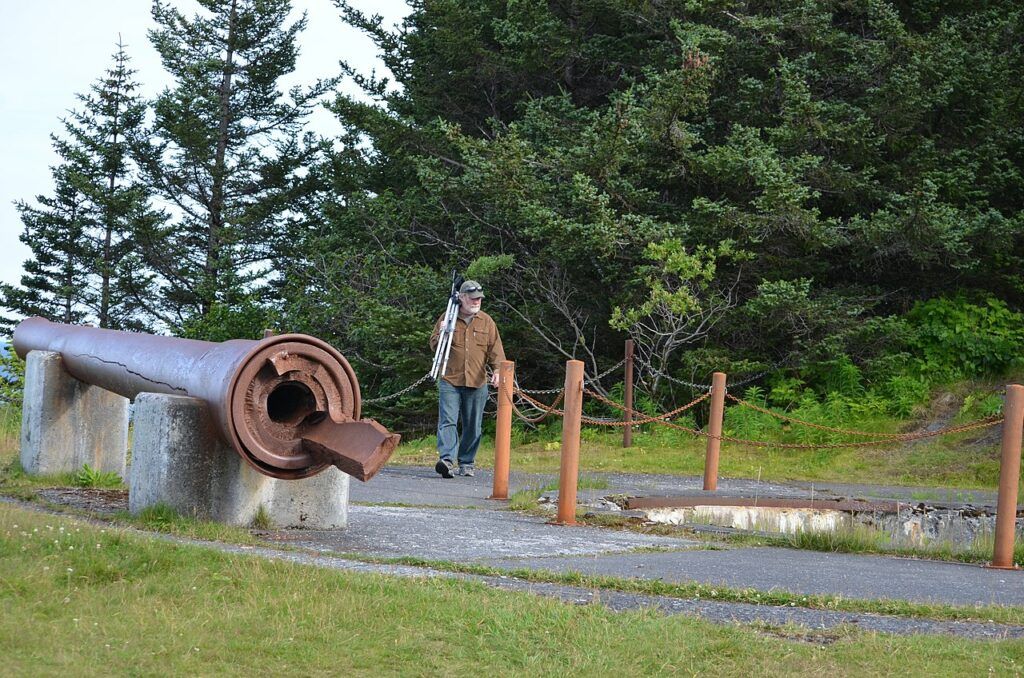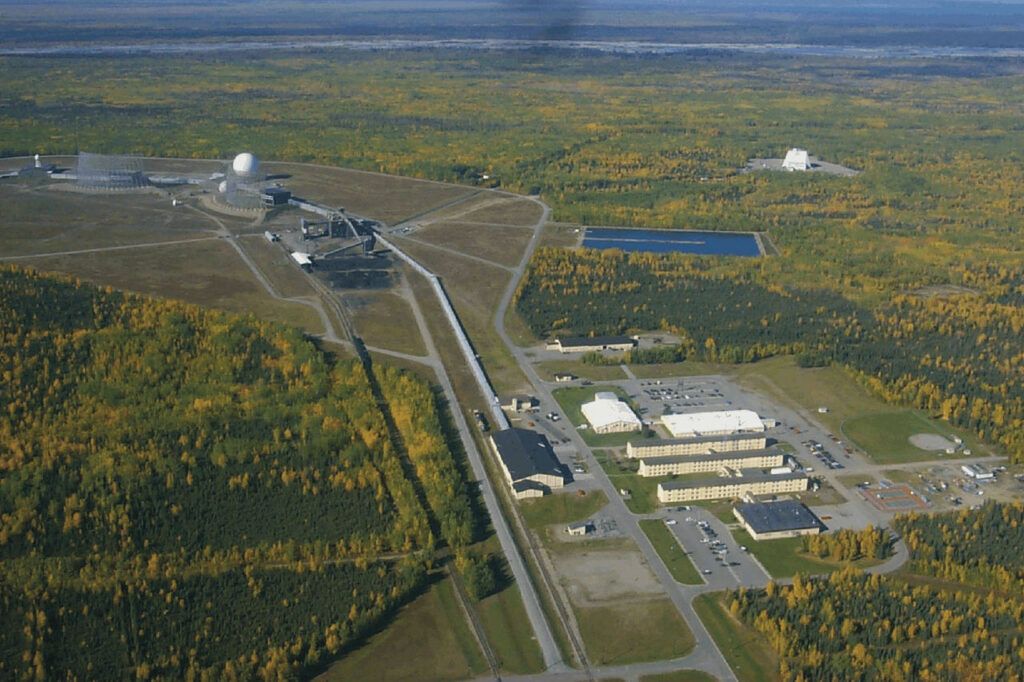Alaska, known for its extreme climate and vast wilderness, is also home to key U.S. Army forts contributing to the nation’s defense. With a focus on arctic warfare and unique training opportunities, these military bases play an essential role in maintaining the readiness of American troops.
Although the state only hosts a few Army forts, their strategic importance cannot be underestimated. In this article, we will explore the distinctive features of these bases, along with their overall mission and the units stationed there. Discover why Alaska’s Army forts are indispensable to the United States military presence and security network.
Historical Background of Forts in Alaska

The U.S. Army has had a significant presence in Alaska since the territory became American soil on October 18, 1867. The early involvement of the Army in the region revolved mainly around the construction and maintenance of forts along Alaska’s southern coastline and beyond.
Fun Fact: The military once used sled dogs in Alaska to haul equipment and supplies back and forth across the tundra.
Fort Richardson, which would later become a part of Joint Base Elmendorf-Richardson, commenced its construction on June 8, 1940. The Army intended for it to be a major and lasting military installation.
Another historically important army base in Alaska is Fort Greely, which was initially occupied by Army Forces in 1941. The strategic position of this base enabled it to serve as a defense site during World War II and the Cold War. It remains an important military facility for the U.S. Army in Alaska.
As time progressed, the U.S. Army in Alaska worked extensively on various infrastructure projects in collaboration with Army Engineers, who played a pivotal role in the development of the state. The military presence in Alaska has continued to evolve, with additional bases such as Fort Wainwright and Clear Air Force Station expanding the Army’s strategic reach in the region.
Notable Army Forts in Alaska
Fort Richardson

Fort Richardson is a United States Army installation located in Anchorage, Alaska. The fort is home to the United States Army Alaska and the 4th Brigade Combat Team (Airborne), 25th Infantry Division. It was built during 1940-1941 on the site of what is now Elmendorf Air Force Base. Established as the headquarters of the United States Army, Alaska (USARAL) in 1947, the post moved to its present location five miles north of Anchorage in 1950.
The post then had barracks for 500 Soldiers, a rifle range, a few warehouses, a hospital, and a cold-weather testing facility.
Fort Richardson covers an area of approximately 62,000 acres, with most of the land used for military training and operations. The base is located near the city of Anchorage, which is the largest city in Alaska.
Anchorage offers a variety of shopping, dining, and entertainment options for military personnel stationed at Fort Richardson. The city also has several museums and cultural attractions, including the Anchorage Museum at Rasmuson Center and the Alaska Native Heritage Center.
The installation is surrounded by the Chugach Mountains, providing a picturesque backdrop for military personnel stationed at Fort Richardson. The nearby mountains offer opportunities for outdoor recreation, including hiking, skiing, and snowboarding.
Fort Richardson also offers several recreational facilities for military personnel and their families, including a fitness center, a bowling alley, and a movie theater Fort Richardson is well suited for military personnel to experience the beauty and ruggedness of Alaska while serving their country.
Fort Wainwright

Fort Wainwright is a United States Army installation located in Fairbanks, Alaska. The installation is home to the United States Army Garrison and several United States Army Alaska units, including the 1st Stryker Brigade Combat Team and 25th Infantry Division.
The base covers an area of approximately 1.5 million acres, with most of the land used for training exercises and military operations.
Fort Wainwright is situated in the interior of Alaska, surrounded by snow-capped mountains, lakes, rivers, glaciers, and abundant wildlife. The Army base’s location provides unique opportunities for outdoor recreation, including hiking, fishing, hunting, and skiing.
Fort Wainwright also offers several recreational facilities for military personnel and their families, including a 24-hour fitness center, a bowling alley, and a movie theater.
The installation is located adjacent to the city of Fairbanks, which is the second-largest city in Alaska. Fairbanks offers a variety of shopping, dining, and entertainment options for military personnel stationed at Fort Wainwright.
The city has several museums and cultural attractions, including the University of Alaska Museum of the North and the Fairbanks Ice Museum. Additionally, the nearby city of the North Pole is home to the Santa Claus House, a popular tourist attraction.
Fort Wainwright provides a unique opportunity for military personnel to experience the beauty and ruggedness of Alaska while serving their country. The fort’s location, combined with its recreational facilities and proximity to the city of Fairbanks, make it an attractive destination for military personnel and their families.
Fort Greely

Fort Greely is about 100 miles southeast of Fairbanks. It is primarily used as a launch site for anti-ballistic missiles, but it is also home to the Cold Regions Test Center (CRTC), which conducts cold weather testing for the military.
Fort Greely covers 169.7 square miles, with 169.4 square miles of land and 0.4 square miles of water. It lies between two beautiful mountain ranges, providing breathtaking scenery for those stationed there.
Fort Greely is considered a remote tour of duty, far from any major cities or towns. The nearest town is Delta Junction, located about 5 miles south of the installation on the Richardson Highway. There is very little shopping or entertainment in the area, so most people travel to Fairbanks for those amenities.
However, Fort Greely does have some family-friendly attractions, such as the Aurora Community Activity Center, which hosts events like the Annual Fall Festival, Holiday Tree Lighting, and Spring Carnival.
Despite its remote location, Fort Greely provides a unique opportunity for military personnel to experience the extremely cold weather conditions typical in Alaska. The Cold Regions Test Center tests various military equipment in these conditions, ensuring they can operate effectively in harsh environments.
Additionally, the location of this fort makes it an ideal site for launching and testing anti-ballistic missiles, which are used to protect the United States against potential missile attacks.
West of Fort Greely is the Donnelly Training Area, where military personnel train in this rugged area of Alaska. This area of Alaska included seven heavy maneuver training areas and eight light maneuver training areas encompassing 674,128 acres.
Allen Army Airfield
Big Delta Army Air Field is a former United States Army airfield in Delta Junction, Alaska. Established in 1942, it was originally named for the river delta formed by the Delta River and the Tanana River confluence. Fort Greely now uses this airfield.
The airfield had training facilities for fighter pilots during World War II and played a key role in the defense of Alaska during the Cold War. Today, the airfield is known as Allen Army Airfield and is used primarily for military operations and training.
The airfield is located in a remote area of Alaska, surrounded by mountains and wilderness. The nearby town of Delta Junction offers some shopping and entertainment options, but most service members stationed at Allen Army Airfield travel to Fairbanks for those amenities.
However, the installation offers several recreational facilities for military personnel and their families, including a fitness center, a bowling alley, and a movie theater.
The airfield’s location, combined with its recreational facilities and proximity to the city of Fairbanks, make it an attractive destination for military personnel and their families.
Additionally, the airfield’s history as a training base for fighter pilots during World War II and its role in the defense of Alaska during the Cold War makes it an important part of Alaska’s military history.
Strategic Importance of Alaskan Army Forts

Alaska, often called America’s “Last Frontier,” is strategically important for the United States military. Situated in the far north, its geographic location provides the U.S. with a key vantage point for military operations and defense strategies, as aptly described by Brig. Gen. Billy Mitchell stated, “Alaska is the most strategic place on earth.”
Throughout history, the military presence in Alaska has evolved in response to the changing geopolitical landscape. During World War II, for example, Alaska’s proximity to the Soviet Union and Asia made it an ideal location for establishing garrisons, trails, roads, and communication systems.
The numerous Alaskan army forts serve different functions, including:
- Air defense capabilities
- Missile systems
- Ground combat training
- Maritime security
In recent years, the U.S. military has been bolstering its presence in Alaska to strengthen NATO’s western flank and better prepare for potential threats in the Arctic region. This expansion includes enhancing existing forts and constructing new facilities, highlighting this region’s military significance.
Environmental and Cultural Considerations
Army forts in Alaska, such as Fort Wainwright and Fort Greely, recognize the importance of environmental and cultural resource management on their army bases. To address these concerns, the U.S. Army Alaska (USARAK) has proposed action plans that involve proactive management of these resources.
For instance, Fort Wainwright has been working on upgrading its coal-fired central heating and power plant to a more reliable and sustainable heating system. This approach minimizes the environmental impact while still providing essential services for the base.
Cultural resource management plays a vital role in preserving the history and heritage of these installations. Initiatives have been undertaken to manage and protect the forts’ cultural resources, including those at Fort Wainwright and Fort Greely.
In the broader context, other military lands in Alaska, like Joint Base Elmendorf-Richardson, have also made efforts to uphold the preservation of cultural resources. They employ Cultural Resources Technicians to assist in environmental management efforts.
These fortifications adhere to strict regulations and guidelines as part of their commitment to preserving the natural environment and cultural resources. They ensure the missions can be carried out while minimizing adverse impacts on the surrounding ecosystems and local heritage.
Current Operations and Modernization in Alaska
Alaska has several key Army installations, including Fort Wainwright and Joint Base Elmendorf-Richardson (JBER). These installations serve as vital components of the United States military presence in the region, contributing significantly to the defense and security of the nation.
In recent years, the Army has taken steps to modernize and enhance the capabilities of its forces in Alaska. This includes initiatives such as activating U.S. Army Alaska (USARAK) to replace the 6th Infantry Division in 1994. Also, the development of a comprehensive Modernization Plan in 2004 focused on improving the overall structure and readiness of the regional forces.
One notable move to boost capabilities was the proposal to establish a permanent detachment of special operations forces (SOF) in Alaska. This would allow for better coordination and synchronization of efforts with USARAK, ensuring a unified response to any potential threats in the region.
Such rotational deployments of SOF to Fort Richardson can help provide enhanced security and deterrence against near-peer adversaries.
Furthermore, the Army is committed to improving the quality of life for its soldiers stationed in Alaska. In May 2022, senior leaders announced significant actions and initiatives to address the unique challenges faced by service members in the state, including harsh weather conditions and limited access to resources.
These initiatives aim to ensure that the personnel stationed in Alaska are well-equipped to carry out their missions effectively and maintain a high state of readiness.
Further Reading: 7 Army Forts in Arizona
Important Air Force Bases in Alaska
Alaska also has three Air Force Bases strategically located to protect the U.S. from air assault. These bases are:
Eielson Air Force Base

Eielson Air Force Base is a United States Air Force installation located approximately 26 miles southeast of Fairbanks, Alaska, and just southeast of Moose Creek, Alaska.
The base covers an area of approximately 63,195 acres and is home to the 354th Fighter Wing, which is responsible for supporting and defending U.S. interests in the Asia-Pacific region.
The wing operates and maintains PACAF’s largest air-to-ground bombing range complex and conducts PACAF’s premier large force exercise, Red Flag – Alaska.
Eielson Air Force Base was established in 1943 as Mile 26 Satellite Field and was redesignated on January 13, 1948. The base was named after Carl Ben Eielson, a pioneering Alaskan aviator who died in a plane crash in 1929.
During World War II, Eielson Air Force Base was used as a training base for fighter pilots, and it played a key role in defense of Alaska during the Cold War.
The base is located in a remote area of Alaska, surrounded by mountains and wilderness. The nearby town of Fairbanks offers some shopping and entertainment options, but most military personnel stationed at Eielson Air Force Base travel to Fairbanks for those amenities.
However, the installation offers several recreational facilities for military personnel and their families, including a fitness center, a bowling alley, and a movie theater.
Eielson AFB provides a unique opportunity for military personnel to experience the extreme weather conditions and rugged terrain of Alaska while serving their country.
Eielson’s location, combined with its recreational facilities and proximity to the city of Fairbanks, make it an attractive destination for military personnel and their families.
Elmendorf Air Force Base

Elmendorf Air Force Base is located in Anchorage, Alaska. The installation covers an area of approximately 5,000 acres. It is home to the 673d Air Base Wing, which supports over 10,000 active-duty, reserve, and National Guard personnel and their families.
The wing is responsible for providing infrastructure, logistics, and services to support the mission of the Joint Base Elmendorf-Richardson (JBER) community.
Elmendorf Air Force Base was established in 1940 as Elmendorf Field and was named after Captain Hugh M. Elmendorf, a pioneer in Alaskan aviation. During World War II, the installation was used as a training base for fighter pilots, and it played a key role in the defense of Alaska during the Cold War.
Today, Elmendorf AFB is a critical hub for air transportation and logistics in the Pacific region, supporting military operations throughout the Asia-Pacific region.
This air force base is located near the city of Anchorage, which is the largest city in Alaska. Anchorage offers a variety of shopping, dining, and entertainment options for military personnel stationed at Elmendorf Air Force Base.
The city also has several museums and cultural attractions, including the Anchorage Museum at Rasmuson Center and the Alaska Native Heritage Center.
The location, combined with its proximity to the city of Anchorage and its critical role in supporting military operations in the Pacific region, make it an attractive destination for military personnel and their families.
Clear Air Force Station

Clear Air Force Station is a United States Air Force installation located in central Alaska, approximately 1 mile from Anderson, 78 miles from Fairbanks, and 100 miles from Mount McKinley.
The base covers an area of approximately 11,000 acres and is operated by the 213th Space Warning Squadron of the Alaska Air National Guard. The station primarily aims to monitor intercontinental ballistic missiles (ICBMs) and submarine-launched ballistic missiles.
Clear Air Force Station was established in 1958 as a radar site for detecting incoming Soviet missiles during the Cold War. Today, the station has several radar systems, including the Perimeter Acquisition Radar Attack Characterization System (PARCS), which detects and tracks ballistic missile launches. Clear AFS supports other regional military operations, including search and rescue missions and disaster response efforts.
The installation is located in a remote area of Alaska, surrounded by mountains and wilderness. The nearby town of Anderson offers some shopping and entertainment options, but most military personnel stationed at Clear Air Force Station travel to Fairbanks for those amenities.
However, the installation offers several recreational facilities for military personnel and their families, including a fitness center, a bowling alley, and a movie theater.
Clear Air Force Station is critical in ensuring the United States national security by providing surveillance and tracking of ballistic missile launches.
Additionally, the installation’s history as a radar site during the Cold War and its ongoing role in supporting military operations in the region make it an important part of Alaska’s military history.
Conclusion – Army Forts in Alaska
As you can see, Alaska has been an important military ground for many military bases and outfits for over a hundred years. Because of its unique weather and terrain, Alaska will remain an important staging and training area for military personnel.
Alaska is also in a location that can intercept threats from other countries before they reach the homeland of the United States. Army forts in Alaska are crucial to protecting the United States.

Cory is a website owner and content creator who enjoys fishing, history, coin collecting, and sports, among other hobbies. He is a husband and father of four.
Romans 15:4 For whatever was written in former days was written for our instruction, that through endurance and through the encouragement of the Scriptures we might have hope.

